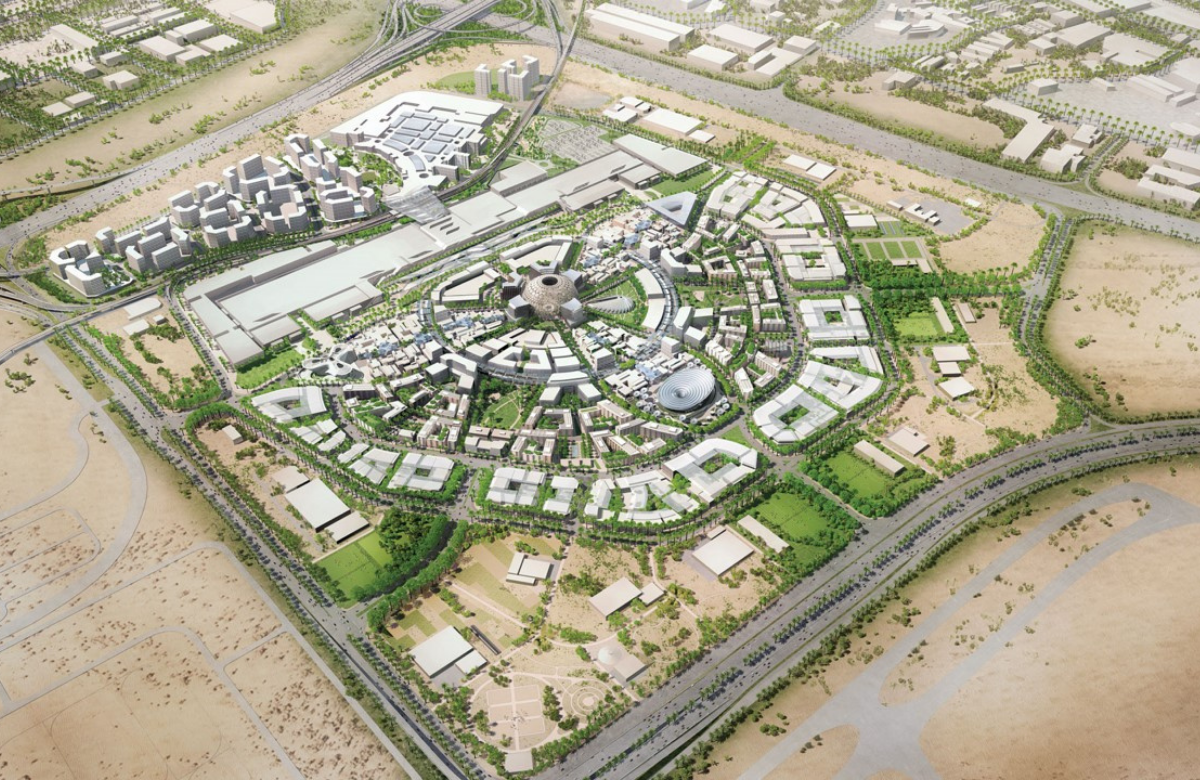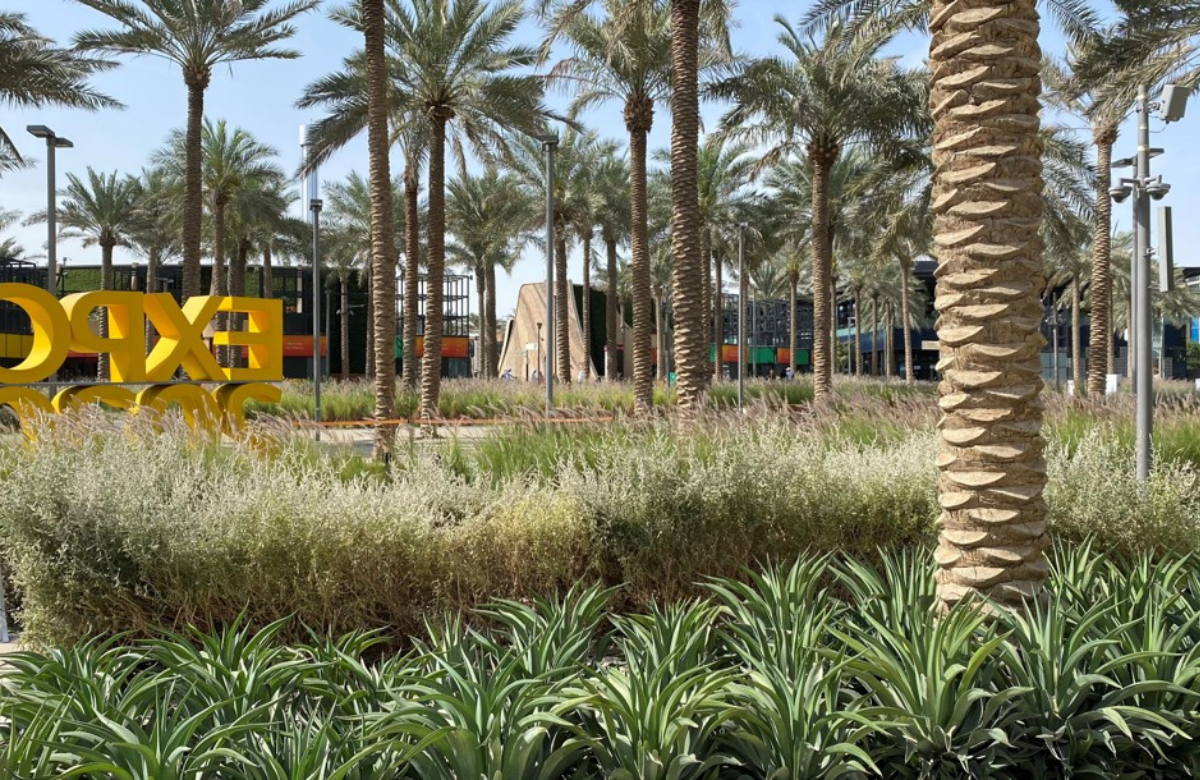For six months, the Dubai World Expo focused on technology and innovation, the cornerstones of the cities of tomorrow – cities that, more than ever, will put mobility and sustainability at the centre of their transformation.
For the first time in its history, the Middle East hosted a World Expo. For six months, 192 countries and nearly 25 million visitors converged in Dubai for a global event whose theme was “Connecting minds and creating the future.” It’s a theme that couldn’t be more relevant; the world’s metropolises face major challenges and must quickly devise high-value solutions to address issues such as global warming, demographic upheaval and preservation of their cultural and historical heritage – issues also covered by Ivanhoé Cambridge’s mission.
An inspiring vision of the city of tomorrow
Conceived as an entire city, the exhibition site adopted the codes and standards of the “15-minute city” where human needs and many desires (shops, workplace, school, recreation, etc.) are easily accessible on foot or within a travel distance of 15 minutes. This city in the making features innovations in architecture, design and urban planning, all geared to the needs of occupants. But beyond the architectural and technical feats, special attention to detail testified to the importance of striking a balance between large and small gestures and of weaving a strong narrative into the urban fabric of the future. With references to local culture, such as inscriptions on street furniture and a variety of vegetation, sounds and patterned slabs especially selected for each place, the event’s designers showed a true sense of detail.
To learn more about the execution details, listen to this episode of the Inside Expo podcast : The Hidden Stories | World Expo (virtualexpodubai.com)

Learn more about the District 2020 and its future use in this brochure. 85 start-ups & SMEs have announced they will settle in District 2020 by the end of the year confirming future vocation of the site.
Constant innovation in mobility and logistics
Enriching the experience of communities also requires mobility solutions for people and goods. In this area, innovation is more vital than ever, especially in logistics. Some countries are opting for faster and more energy-efficient ways of facilitating passenger and freight transportation, such as hyperloops.
A notable example is the DP World Cargospeed exhibited by the company on site.
At the same time, underground logistics is becoming a strong trend in countries that want to develop innovative logistics capabilities. Others, like Norway are using underwater drones for deliveries. All these examples demonstrate how important it is for today’s real estate industry to stay ahead of the game by closely tracking demographics and population shifts to capitalize on the best investment opportunities in growing asset classes, such as logistics and residential.
Sustainability: killing two birds with one stone
Beyond mobility, the city of tomorrow will have to respond to the challenge of sustainability by doing more with less. Thus, the concept of “1 + 1 + 1” represents a genuine alternative. It involves using the idea of killing two birds with one stone to solve several problems at once, particularly in the context of greenhouse gas (GHG) emissions. The latest IPCC report recently reiterated that we must reduce GHG emissions quickly and sustainably in all sectors of the economy to ensure global warming is limited to 1.5°C.
Some countries have developed ways of achieving significant energy savings, such as United Arab Emirates, which presented Seramic Energy at the Expo; a technology to capture energy by integrating it into recycled steel, which is used to produce batteries. The Netherlands, for its part, has devised a system to manage humidity in buildings and to repurpose the accumulated water for other uses, such as fish farming. These innovations demonstrate that the real estate sector is ready for a profound transformation that can provide answers to environmental challenges.
Toward better connectivity
To build the cities of the future, we must “connect minds” and, therefore, develop a connected environment. In this area, there are many opportunities, such as the deployment of building information modelling (BIM) and “digital twin” tools. These technologies underscore the need to deepen our knowledge so that we can connect buildings to objects more effectively, for the benefit of their occupants. Such technologies ensure effective processing and management of data, whether the data concern movements of individuals, air quality in buildings or consumption of energy. Similarly, the development of private micro-networks – electrical grids, 5G telephony and closed micro-networks for waste treatment or logistics – offers new ways for the real estate sector to reduce its carbon footprint. A convincing example is the MindSphere Smart City mobile app developed by Siemens which gathered, monitored, linked and analyzed all the data related to the Expo site in one place to ensure that the event’s sustainability targets were met.
For optimal value creation
All the achievements and technological advances seen at the World Expo enable us, as a long-term real estate investor, to look to the future in an ever more innovative way. Above all, they encourage us to further develop our know-how and expertise. In a constantly changing world, it’s vital that we stay abreast of the trends shaping the real estate of tomorrow and capitalize on the opportunities they create. This approach is essential to ensure optimal value creation for our tenants and sustainable performance for our shareholders.
No one is an island; to succeed in bringing this more sustainable and mobile city of the future to life will require a collective effort by the entire industry. The challenge of our generation is that we must transform our built heritage to make it more sustainable while constantly innovating to create new generations of buildings that are more respectful of the environment and the well-being of their occupants.

